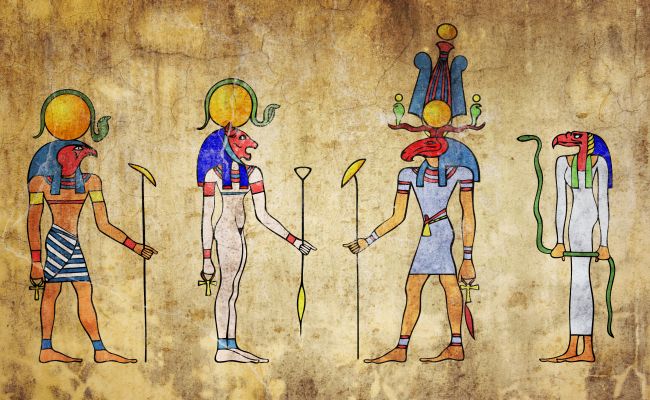
The worship of cats has existed as long as pantheism and zoolatry have been practiced. From the temple of the Egyptian goddess Bastet, to the tales of Norway and temple guardians of Japan, felines have been regarded by many cultures as divine creatures.
Egypt: The ancient Egyptians famously regarded cats not only as family members, but also as celestial beings, worshipping the cat goddess of fertility named Bastet. Felines were sacred, their deaths mourned, and their presence cherished by the highest of royals to the lowliest servants. Cats were given ornate burials and have been immortalized in Egyptian hieroglyphics.
Greece: The ancient Greeks viewed their goddess Artemis as similar to the Egyptian cat goddess Bastet. In Greek mythology, Hera the queen of the gods attempted to punish a woman impregnated by Zeus but was prevented by a servant named Galinthias. Hera was enraged and retaliated by turning Galinthias into a cat, and condemned her to wander the underworld as a priestess for Hecate. Black cats were believed to be a tragic omen foreshadowing death, since the priestess of Hectate (goddess of death) was attended by the cat. (NOTE: There are also tales of Hectate shape-shifting into the form of a cat to escape danger.)
Rome: Cats were strongly associated with the Roman hunting goddess Diana, who according to mythology once changed herself into a cat to escape the dangerous Typhons. Cats were regarded in Rome as noble and free beasts, and were able to roam about the city and in the temples uninhibited. Many images of Libertas the goddess of freedom include a cat sitting at her feet. Cats were companions of the home, guests at significant occasions such as weddings, funerals, and would accompany the military troops acting as guards, warding off vermin from the stores of grain.
Babylon: Felines were believed to be the honored escorts of the souls of those deceased on their journey to the afterlife.
Norway: The beautiful Norse goddess Freya was worshiped for love, fertility, war, and magic. The Norse people believed she would ride around in a chariot led by two great gray cats that were a present from Thor. Farming families would leave offerings of fresh bowls of milk for Freya’s divine cats in hopes of a good harvest. Cats also played an artistically illustrative role for many stories in Norse mythology.
Finland: Like the ancient Babylonians, the people of Finland also regarded cats as sinister creatures who moved between this world and the afterlife. Cats were written about in Finnish tales and poetry, of how cats would lead the souls of the dead to heaven or hell.
Germanic: Many European societies regarded cats (particularly black ones) to be bad omens, or spiritual creatures connected to the underworld, hell and the devil.
Celtic: The Welsh goddess of wisdom, Ceridwen was believed to be served by white cats who acted as messengers, carrying out her will on earth.
India: The ancient Hindu people believed that the goddess Shastri chose a great cat as her noble steed. In the religious work The Ramayana, a god named Indra would take the form of a cat as a means of escape. The Hindus also worshiped a cat goddess named Sastht who was similar to the Egyptian goddess Bastet.
China: The Chinese Book of Rites describes a cat god named Li Shou who was revered and worshipped by farmers, as the crop protector who would rid the land of mice and rats. (Similarly, ancient Polish farmers believed a black cat named Ovinnik would protect their farms and homes from evil sprites and ghosts.)
Japan: According to tradition, the Japanese people believed cats to be sacred beings capable of embodying human souls, able to control the dead. Certain markings on the fur would indicate if the cat possessed the spirit of a family’s ancestors. One famous cat named Maneki-Neko, or the Beckoning Cat who represents the divinity of mercy. In Japan, cats were regarded as sacred protectors, often housed in Buddhist temples and on silkworm farms to kill the rodents that would disrupt worship, and harm developing cocoons of precious silkworms.

